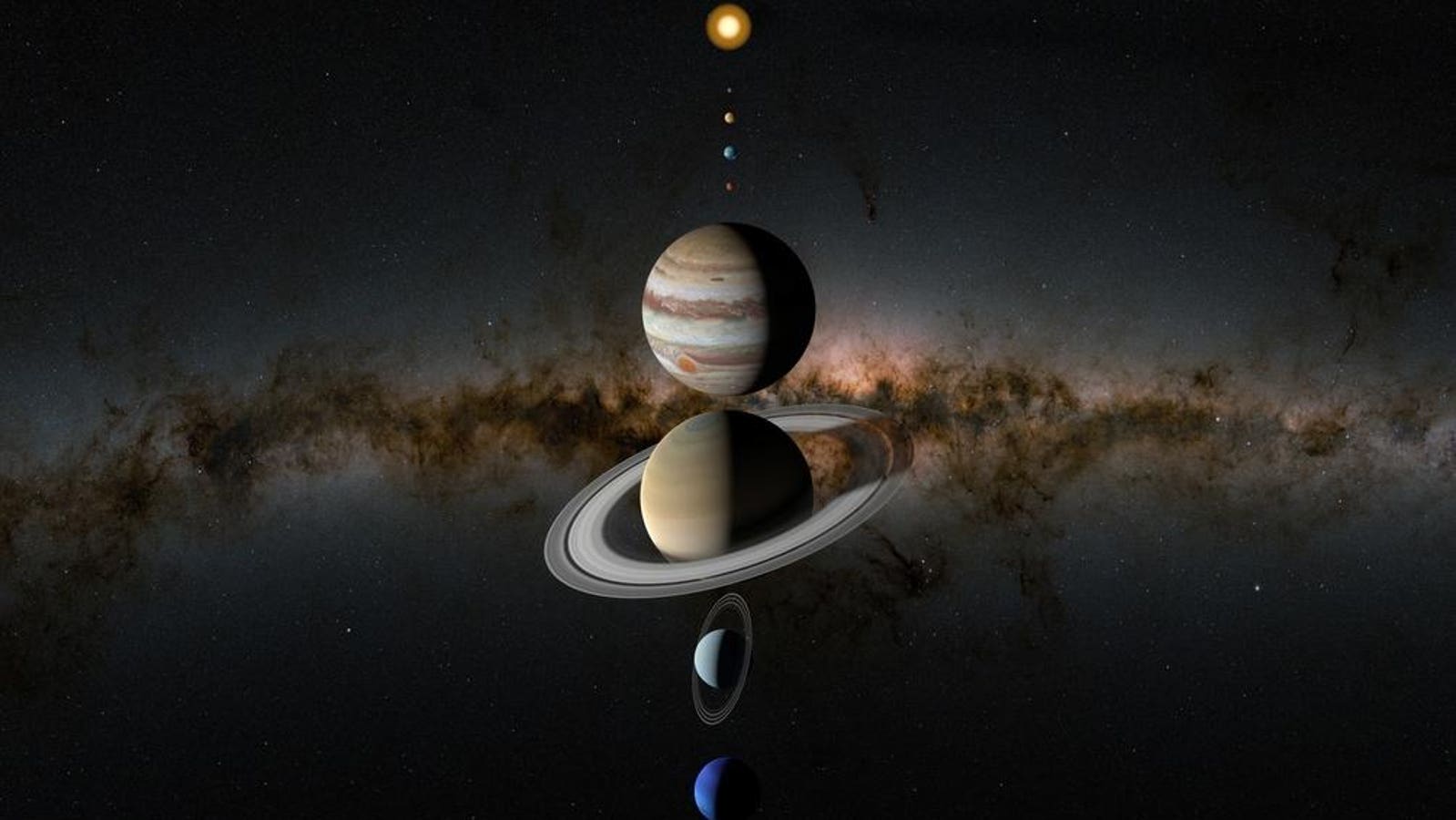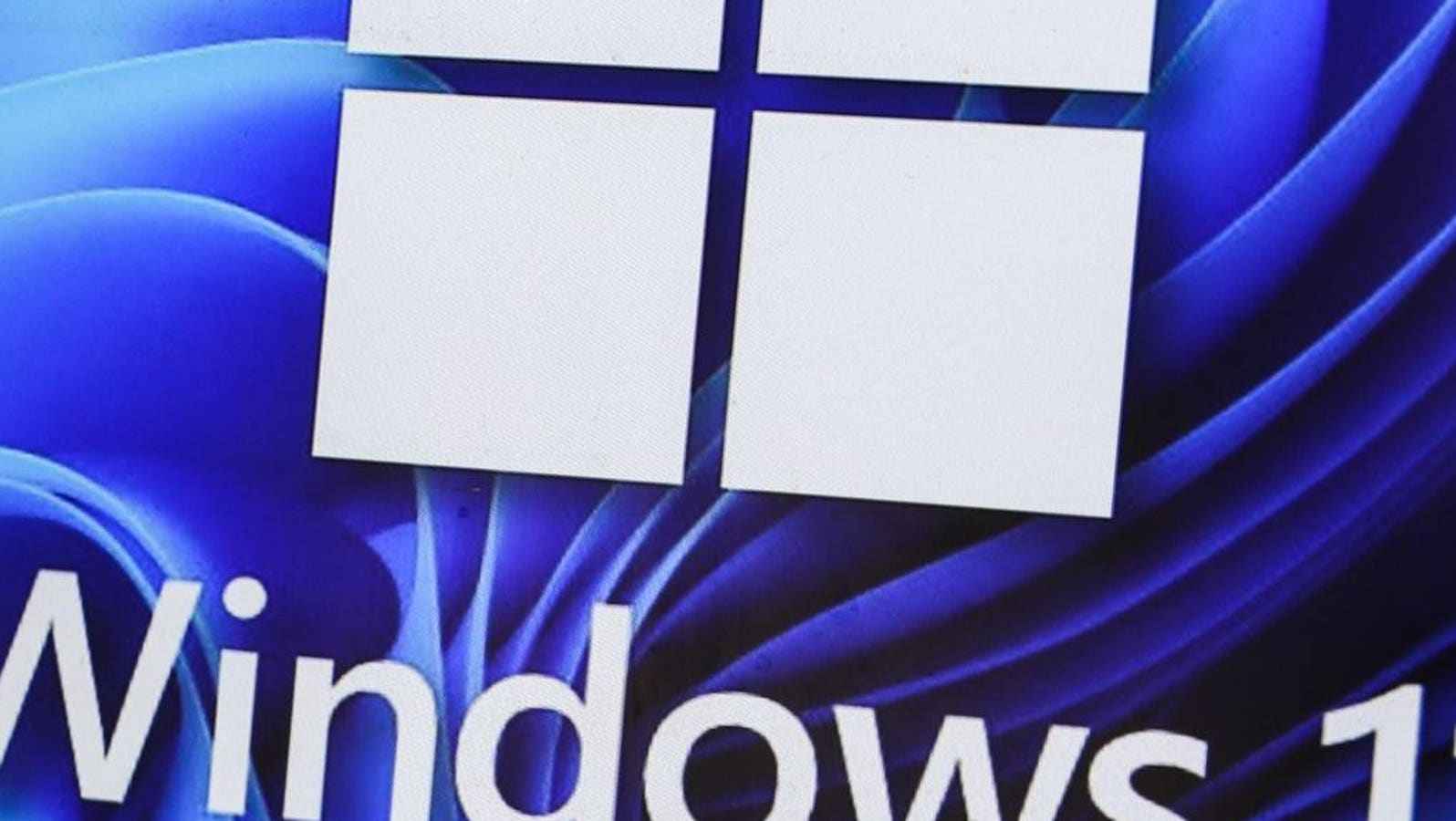Topline
Six planets line up in the pre-dawn sky on Wednesday, Aug. 27 — but not for long. Venus, Jupiter, and Saturn will shine brilliantly, joined by fainter Mercury rising shortly before the sun. Uranus and Neptune are also in the parade, though only binoculars or a telescope will reveal them. With Mercury slipping into the sun’s glare, this rare six-planet spectacle will soon give way to a five-planet show.
Morning planet parade 2025: watch six planets before sunrise in the eastern sky — Venus, Jupiter, Saturn, Mercury, Uranus, and Neptune. (Artist’s impression does not represent how the ‘planet parade’ will look!)
getty
Key Facts
Best seen at least an hour before sunrise, the most easily found members of the alignment will be Venus and Jupiter in the eastern sky. They will be about 15 degrees apart.
Saturn shines in the southwest, higher than Mercury but fainter than Venus and Jupiter. The moon is not in the sky at all during the parade this week.
Mercury, the smallest and hardest to find of the group, will appear just above the horizon about 45 minutes before sunrise. Find an unobstructed view toward the east for the best chance of spotting it.
Mercury is not easy to see because it appears below about 10 degrees altitude, according to NASA. It will remain easily visible until around Aug. 26, after which it will sink into the eastern horizon. Seeing the outer ice giants Uranus and Neptune requires binoculars or a telescope.
Planet-rise and planet-set times for an exact location vary, so use an online planetarium that displays that data. The following planet parade will occur in October 2028, when five planets will be visible together, again before sunrise.
Looking east 45 minutes before sunrise from mid-northern latitudes on August 27, 2025, three planet are visible, with Saturn bright in the southern sky.
Stellarium
Finding The ‘winter Triangle’
Look to the right of Jupiter and Venus and you’ll see the bright stars that make up a triangle — Betelgeuse in Orion at the top, a little higher than Jupiter, and, below it, Procyon in Canis Major (left, close to Venus) and Sirius in Canis Major (right). Its name comes from the fact that it’s typically visible from November in the post-sunset night sky. However, since we’re four months away from that, it resides in the pre-sunrise night sky.
What’s Next In The Night Sky
The fading planet parade will give way to September’s mix of eclipses, conjunctions and planetary drama. Three bright planets — Saturn, Jupiter and Venus — will be left to anchor the evening skies after Mercury disappears into sunlight in late-August. September’s headline event arguably comes on Sept. 7 with a “blood moon” total lunar eclipse, though that’s only visible from Asia and Africa. On Sept. 19, Venus will be visible before sunrise very close to both a super-slim crescent moon and Regulus, the brightest star in the constellation Leo. On Sept. 21, a partial solar eclipse occurs over the Pacific on the same day that Saturn reaches opposition, shining at its biggest, brightest and best for all of 2025.








